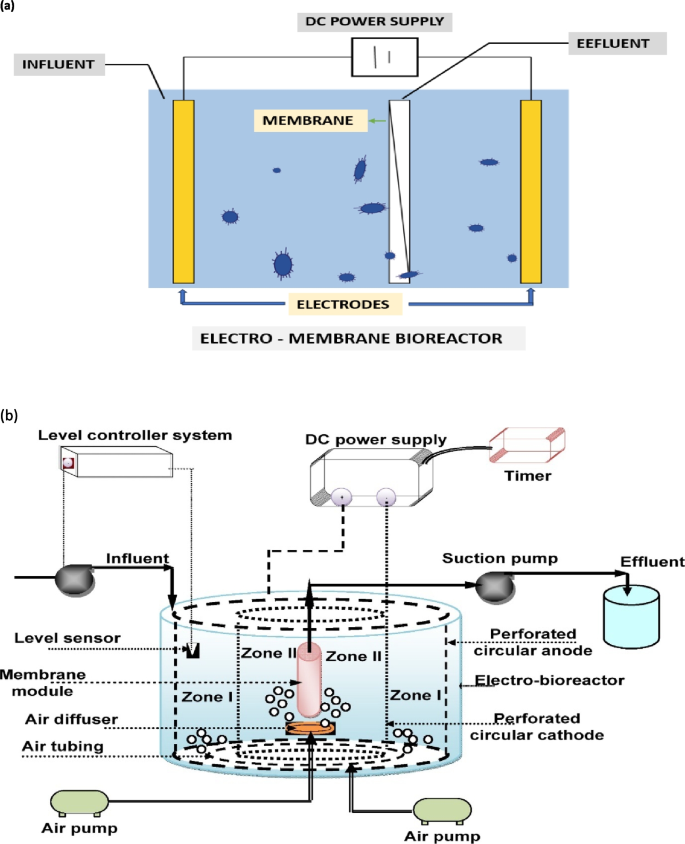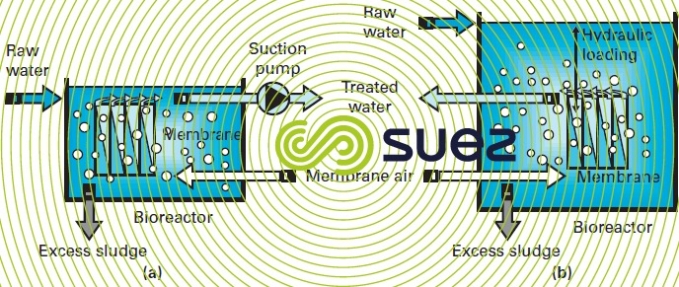How Membrane Bioreactor Technology Is Revolutionizing Wastewater Treatment
How Membrane Bioreactor Technology Is Revolutionizing Wastewater Treatment
Blog Article
Membrane Bioreactors Discussed: Efficient Solutions for Tidy Water
Membrane layer bioreactors (MBRs) have actually become a sophisticated service for resolving journalism difficulties of wastewater treatment. By integrating organic procedures with innovative membrane purification, MBRs not just boost the quality of treated water but additionally decrease the spatial requirements of therapy facilities. As environmental issues magnify, the function of MBR modern technology in advertising sustainable water monitoring comes to be increasingly considerable. Nonetheless, the intricacies of their procedure, benefits, and potential applications warrant a closer exam to totally understand their effect on the future of water treatment.

What Are Membrane Layer Bioreactors?
Membrane bioreactors (MBRs) are sophisticated wastewater treatment systems that integrate biological deterioration procedures with membrane layer purification innovation. This assimilation enables the effective elimination of impurities from water, making MBRs a favored choice in different applications, consisting of metropolitan wastewater treatment and industrial effluent management.

One of the crucial advantages of MBRs is their ability to generate high-grade effluent, commonly ideal for reuse in watering or commercial procedures. Furthermore, MBRs require a smaller footprint compared to conventional treatment systems, making them suitable for urban setups where space might be limited.
Moreover, MBRs can efficiently handle varying influent loads and are much less at risk to the effects of toxic shocks. These features contribute to their growing appeal as a lasting service for dealing with the increasing need for tidy water while decreasing ecological effects.
How Membrane Bioreactors Work
While the procedure of membrane bioreactors (MBRs) may seem complicated, it essentially focuses on the synergy between organic procedures and membrane filtering. MBRs integrate a biological therapy procedure, normally activated sludge, with a membrane layer separation system to treat wastewater successfully.
In an MBR system, wastewater is initial presented right into a bioreactor where microorganisms weaken organic matter and various other pollutants. The organic task decreases the focus of pollutants while advertising the development of biomass. Following this biological therapy, the mixed alcohol is subjected to membrane layer filtering, which can be microfiltration or ultrafiltration, relying on the desired effluent high quality.
The membrane layers act as a physical barrier, permitting water and little solutes to pass while preserving suspended solids and bigger molecules. This enables the system to maintain a high focus of biomass within the activator, enhancing the treatment efficiency.
Moreover, the continuous separation of cured water from the biomass helps with a portable style and decreases the footprint of the therapy facility. In general, the combination of biological deterioration and membrane layer filtering in MBRs causes effective and dependable wastewater therapy, making certain high-quality effluent appropriate for various applications.
Advantages of MBR Innovation
One of the crucial benefits of membrane bioreactor (MBR) modern technology is its capability to create top notch effluent with a significantly decreased impact compared to traditional wastewater therapy approaches. MBR systems properly integrate biological therapy and membrane filtering, causing remarkable elimination of impurities, consisting of suspended solids, pathogens, and organic issue. This ability causes effluent that typically meets or exceeds stringent governing requirements for reuse and discharge.
In addition, MBR innovation permits for higher biomass concentrations, which enhances the treatment efficiency and minimizes the required reactor volume. This portable design is especially helpful in metropolitan areas where area is limited. Look At This The operational click over here now adaptability of MBR systems additionally implies they can adapt to varying influent high qualities and circulation rates, making them appropriate for a vast array of applications.
Additionally, the reduced sludge production connected with MBR procedures adds to reduce operational and upkeep costs. The membrane layers work as a physical obstacle, lessening the danger of blocking and making it possible for longer functional periods in between cleansing. In general, the advantages of MBR technology make it an appealing remedy for sustainable wastewater treatment, addressing both environmental problems and the demand for effective source administration.
Applications of Membrane Layer Bioreactors
With their flexibility and effectiveness, membrane bioreactors (MBRs) find applications across various fields, including community wastewater treatment, commercial procedures, and also water recovery. In community settings, MBRs give a compact remedy for dealing with wastewater, effectively eliminating pollutants while simultaneously producing high-grade effluent that fulfills rigorous governing requirements. This makes them specifically ideal for areas with restricted space.
In industrial applications, MBR technology is made use of for dealing with procedure water, particularly in markets such as food and beverage, drugs, and petrochemicals. These sectors take advantage of MBRs' capacity to handle high natural tons and their performance in recuperating valuable resources from wastewater, such as nutrients and water.
Furthermore, MBRs play a vital function in water reclamation efforts, allowing the reuse of treated wastewater for irrigation, industrial processes, and even as drinkable water after further therapy (Membrane Bioreactor). Their efficiency in getting rid of toxins and microorganisms makes them a reliable option for making sure water high quality in numerous reuse applications
Future of Water Therapy Solutions
The future of water therapy services is positioned for transformative innovations driven by technological advancement and raising ecological awareness. As international water deficiency comes to be a pressing issue, brand-new techniques, consisting of membrane layer bioreactor (MBR) systems, are readied to play a pivotal role in enhancing the performance and sustainability of water therapy processes.
Arising innovations such as synthetic knowledge and artificial intelligence are expected to maximize treatment operations, allowing for real-time monitoring and anticipating upkeep. This will certainly improve the general integrity and efficiency of water therapy centers. Additionally, improvements in membrane products, such as graphene and nanofiltration, promise to boost permeation prices and lower fouling, causing lower energy intake and functional prices.
In addition, the integration of renewable resource sources into water therapy plants will add to greener practices. The round economy version will certainly also acquire traction, encouraging the healing of beneficial sources from wastewater, such as nutrients and energy.
Verdict

Membrane layer bioreactors (MBRs) have actually arised as an innovative service for attending to the pressing difficulties of wastewater therapy. websites By incorporating organic processes with advanced membrane layer purification, MBRs not just improve the top quality of treated water yet likewise decrease the spatial requirements of therapy centers.One of the key advantages of membrane bioreactor (MBR) modern technology is its capability to generate premium effluent with a significantly decreased footprint compared to traditional wastewater treatment methods.With their versatility and performance, membrane bioreactors (MBRs) discover applications throughout various markets, consisting of municipal wastewater treatment, commercial processes, and also water recovery.In conclusion, membrane layer bioreactors represent a substantial innovation in wastewater treatment technology, integrating biological processes with reliable membrane filtration to create high-grade effluent.
Report this page